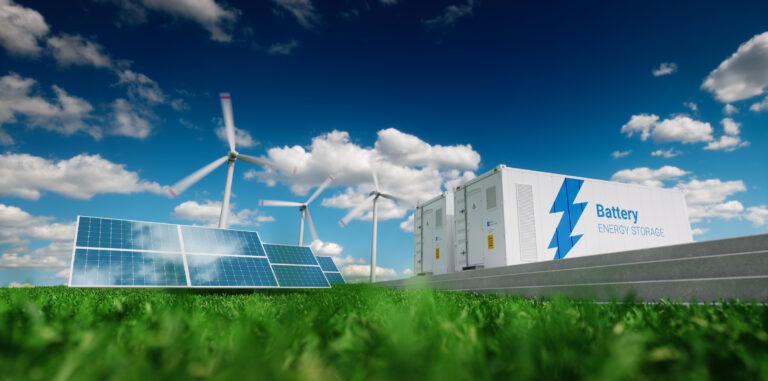In August 2019, BTU Analytics released Getting to the Gulf, a ground-breaking market study on US midstream required to meet Wave 2 LNG export demand. The study details the opportunities and challenges around the upstream and midstream capacity required to meet this potential new source of demand. While the study did not focus on global LNG market balances, the assumed driver of demand is a growing global population necessitating higher levels of low carbon energy in the form of LNG. Since BTU Analytics released the paper, two new potential sources of LNG export demand in the Asia Pacific region have hit the press and help support Wave 2 LNG exports. First, Pakistan selected a consortium, including Shell and Exxon, to build five LNG import terminals in the next several years. Second, Magnolia LNG announced an LNG supply deal for power generation in Vietnam. This Energy Market Commentary will focus on the two deals, energy consumption in Pakistan and Vietnam compared to other regions, and will highlight why LNG is the logical supply choice in Pakistan, Vietnam, and other similar countries.
Building Demand for LNG Exports
LNG Limited’s Magnolia LNG project, located in western Louisiana, is expected to produce 8 MTPA of LNG or consume about 1.05 Bcf/d. The project’s listed in-service date is Q4 2022. In September, Magnolia announced a 0.26 Bcf/d 20-year supply deal to feed an offshore floating storage regasification unit (FSRU) for a power project in the Mekong Delta in southern Vietnam. At the time of publishing Getting to the Gulf, Magnolia LNG was listed as a Tier B project since there was no binding off-take agreements (BTU Analytics ranked over 25 Gulf Coast LNG projects by Committed, Tier A, Tier B and Unlikely). The project combines a supply deal from the US with a power project in Vietnam creating a new source of demand for LNG and bolstering the outlook for Magnolia’s project.
Additionally, in September, the Pakistan’s Minister of Petroleum announced it had selected five companies, including Shell and Exxon, to build five import terminals with expected in-service dates in the next three years. This is an aggressive time schedule for construction of multiple LNG terminals in parallel. No final investment decisions have been made, however the Minister asked for plans to be submitted by November 5, 2019. At the same time, Shell and Energy Transfer are working to develop the Lake Charles LNG facility. The Lake Charles terminal would be capable of exporting 1.97 Bcf/d and is located in western Louisiana. It’s possible Shell could use supply from Lake Charles to feed a portion of the Pakistan LNG deal. BTU ranked Lake Charles LNG as a Tier A project in Getting to the Gulf with an in-service date of 2025. Exxon and Qatar Petroleum’s Golden Pass terminal at 2.05 Bcf/d is located in Beaumont, TX area and was listed by BTU as a Committed project in the study. Again, its possible that Exxon/Qatar Petroleum LNG portfolio would likely be used for some portion of Pakistan LNG import projects should they move forward. The planned in-service date for Golden Pass is 2024.
Energy Consumption in the Two Countries
Energy consumption in Vietnam and Pakistan combine for less than 8% of the energy consumption of the US despite combined having populations roughly equal to the US. Of the two countries, Vietnam uses slightly more total energy than Pakistan even though Vietnam has a population roughly half the size of Pakistan. However, both countries have been seeing rapid growth in total energy demand over the last several years.
As shown below, Vietnam’s total energy consumption has risen exponentially across products with the country heavily reliant on domestically produced oil, coal, and natural gas. Today, all 0.9 Bcf/d of Vietnamese natural gas production is consumed domestically while the country is a net exporter of oil and coal. In 2018, oil and coal represent 69% of Vietnam’s total energy consumption and coal represents nearly 1/3 of its power generation mix.

Additionally, Vietnam has been aggressive in growing hydro power resources as shown above. The balance of Vietnam’s power generation needs are met with natural gas. Today, there are two LNG import terminals planned with in-service dates by 2023 which will drive increased gas demand in Vietnam. Combined with the announcement from Magnolia, these terminals and the rapid growth in energy demand highlight Vietnam as a future home of US LNG exports.
Similar to Vietnam, Pakistan consumes all the 3.3 Bcf/d of domestic gas production as well as the 0.9 Bcf/d of supply from two existing LNG terminals. Unlike Vietnam, Pakistan produces limited amounts of coal and thus its power generation mix is more heavily reliant on oil than coal to meet demand

However, the economy is plagued by natural gas and electricity shortages. Currently, a third LNG import terminal is under construction with an in-service date of 2020 which will help the situation by adding as much as 0.6 Bcf/d to the Pakistan market. The recently proposed five LNG terminals will more substantially address the natural gas shortages, however these terminals may be many years out. Since Pakistan relies on oil for 33% of power generation, increased LNG supply should allow proportionally more electric generation from natural gas vs. oil and serve to displace oil back into the global market.
Additionally, two natural gas pipeline supply efforts have yet to bear fruit for Pakistan. The Turkmenistan-Afghanistan-Pakistan-India (TAPI) natural gas pipeline at 1,127 miles aims to bring supply from Turkmenistan to Pakistan to India via Afghanistan. Construction started on Turkmenistan section in December 2015, while construction on Afghanistan began in February 2018. Stability in Afghanistan remains a concern to the construction and ongoing operations of the pipeline. Meanwhile, the Iran-Pakistan gas pipeline (IP Gas), which is backed by China, is under construction. However, Pakistan backed out of the 1,724 mile long pipeline in May 2019 due to Iranian sanctions. LNG looks like a logical and more secure supply choice when compared to these options.

The slide above highlights the energy consumption profiles of Vietnam and Pakistan versus peer countries and groups of countries. As US LNG export capacity looks to find new LNG export demand, countries with similar demand profiles as Vietnam and Pakistan should be a natural home for US natural gas. All non-OECD countries where oil and coal represent over 65% of total energy consumption are likely candidates based on the trend of decarbonization. South Africa is a good example where coal makes up 88% of electric generation. Africa as a whole gets 39% of electric generation from coal and oil. Expect more supply and demand deal news to break on Wave 2 LNG. To understand impacts of Wave 2 LNG to US upstream and midstream, request more information on Getting to the Gulf.









